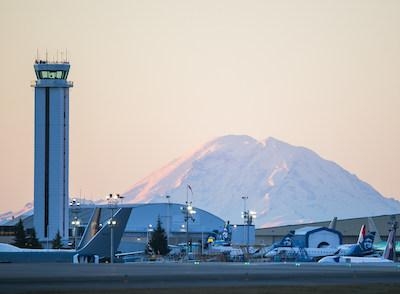Something for the Paine
Washington state wants to create a “world leading” research and development center focused on low-carbon Sustainable Aviation Fuels (SAF). The facility is planned for Snohomish County’s Paine Field (PAE)—home of Boeing’s historic wide-body production facility as well as low-carbon aerospace startups ZeroAvia and MagniX.

Snohomish County Executive Dave Somers announced plans for the PAE facility, which would be built in partnership with Washington State University. Senator Marko Liias and Representative Brandy Donaghy, both civil leaders hailing from Snohomish county, are calling for $6.5-million—drawn from Washington State’s transportation budget—to get the project underway.
Senator Liias, a member of the Washington State Senate Transportation Committee, set forth: “We have been at the forefront of the aviation industry for decades, and this will now put us in a place to lead the world in shaping the future of clean aviation.”
WSU has a Bioproducts, Science, and Engineering Laboratory at its Tri-Cities campus. Among subject lab’s foci is the study and development of biofuels, to include SAF.
The proposed center would feature:
- The world’s first repository of the fuels made by commercial and experimental facilities, which will support future SAF research by serving as reference samples.
- Large-scale SAF sample testing by which to ensure product safety and promote commercialization.
- Research on sample fuels to reduce the cost of production and to minimize the impact of such on human health and the environment.
The Washington State legislature is likely to vote on the transportation budget in the next few weeks. Plans for the center could be in place by September.
Sustainable aviation fuels are being funded, researched, and developed by governments and special interest groups—the majority of which are preoccupied with the optics of progressivism. Like electric motor-vehicles, SAF does not solve the problem of CO2 emission, it merely moves it.
The overwhelming majority of global electricity is generated by burning coal. The electricity required to run a worldwide fleet of electric cars and trucks would require the construction and operation of thousands of additional coal-fired power plants, the CO2 output of which exceeds by degrees that of extant fossil-fuel-powered motor-vehicles. Similarly, the production of SAF is prohibitively resource and energy intensive. The production of one gallon of SAF from grain feedstocks requires 1,300-gallons of potable water, which is expended in both the irrigation of the grain crop and the refinement of the end SAF product. In addition to vegetable matter, SAF is produced from waste cooking oils, woody debris, manure, and algae.

Sustainable Aviation Fuel is superficially attractive to activists insomuch as it can be burned in extant turbine aircraft engines, thereby minimizing disruption to existing airline fleets and infrastructure. Alternate so-called sustainable solutions—such as electric and hydrogen-power—require extensive aircraft modification. What’s more, the antecedent architectures remain in their infancies, and are presently capable of powering only small aircraft—not transport category airliners.
Nevertheless, numerous Washington State companies and institutions have taken steps to support SAF initiatives.
In February, Boeing announced it would purchase twice as much SAF in 2023 as it did in 2022. All told, the aerospace titan intends to shell out for 5.6-million-gallons of the stuff, which is blended in a 30/70 ratio with conventional jet fuel (30-percent SAF to seventy-percent Jet A).
The world’s largest producer of SAF is Finland’s Neste Corporation—a major global energy and engineering concern with operations in 14 countries. Neste is the Finnish term for liquid.
In August 2022, Seattle-based Alaska Airlines announced a program allowing corporate customers to pay for sustainable fuel credits to reduce their carbon emissions. The program is a partnership with WSU, Boeing and Microsoft and builds on a 2020 arrangement between the airline and software giant.
In addition to the inordinate amount of fresh water requisite its production, the practicality of SAF is hindered by its high-cost and short supply. Currently, SAF costs up to five-times more than conventional jet-fuel and accounts for less than 0.1-percent of worldwide jet-fuel consumption. That amount is predicted—by BloombergNEF—to increase to only four-percent by 2030, and only six-percent by 2050.
 Airborne-Flight Training 05.09.24: ERAU at AIAA, LIFT Diamond Buy, Epic A&P
Airborne-Flight Training 05.09.24: ERAU at AIAA, LIFT Diamond Buy, Epic A&P ANN's Daily Aero-Term (05.07.24): Hazardous Weather Information
ANN's Daily Aero-Term (05.07.24): Hazardous Weather Information Aero-News: Quote of the Day (05.07.24)
Aero-News: Quote of the Day (05.07.24) NTSB Final Report: Cessna 150
NTSB Final Report: Cessna 150 Aero-News: Quote of the Day (05.08.24)
Aero-News: Quote of the Day (05.08.24)




